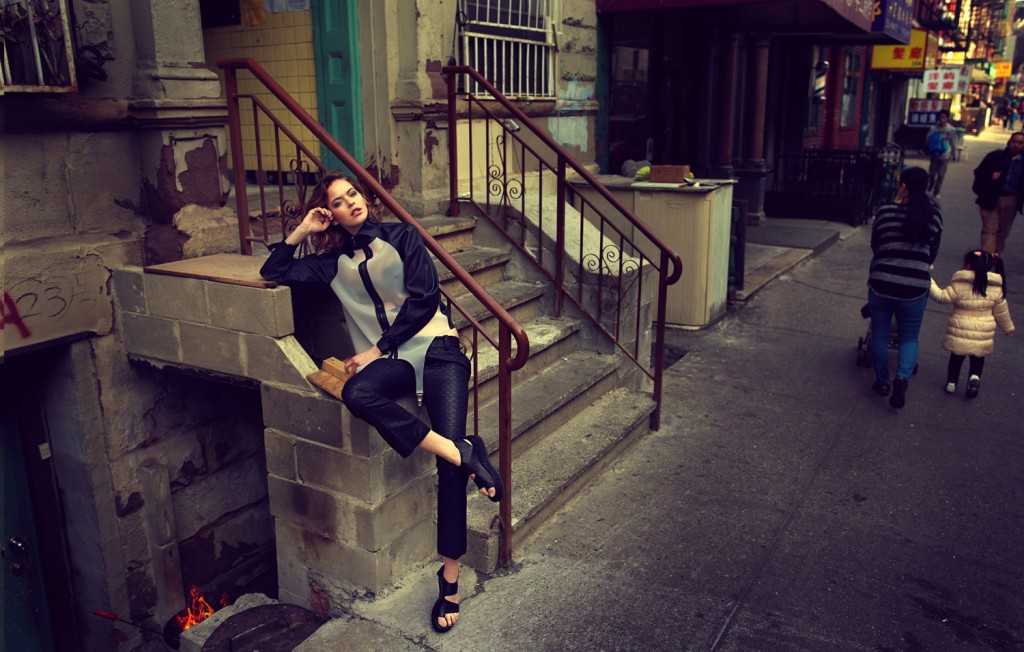
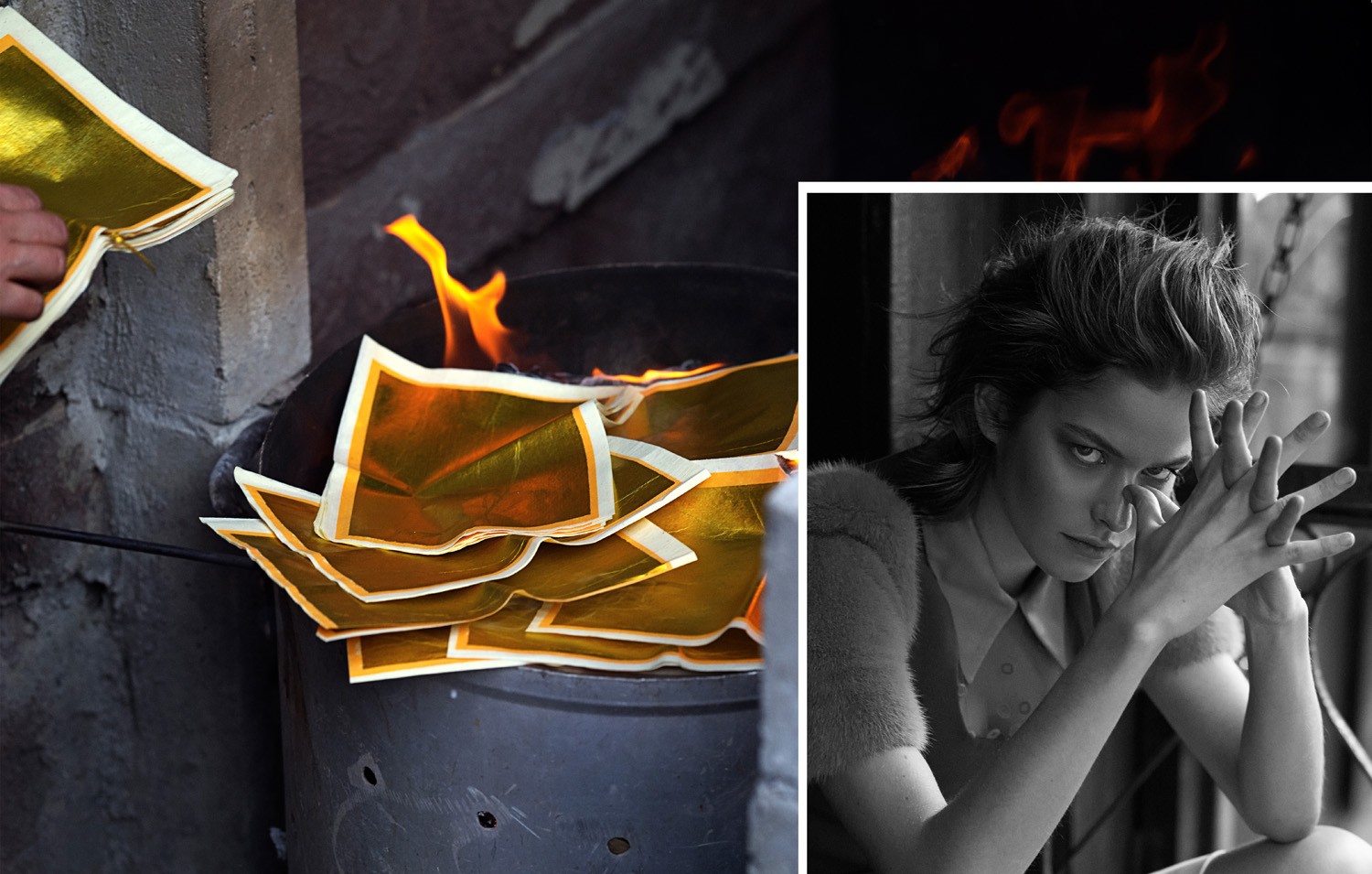
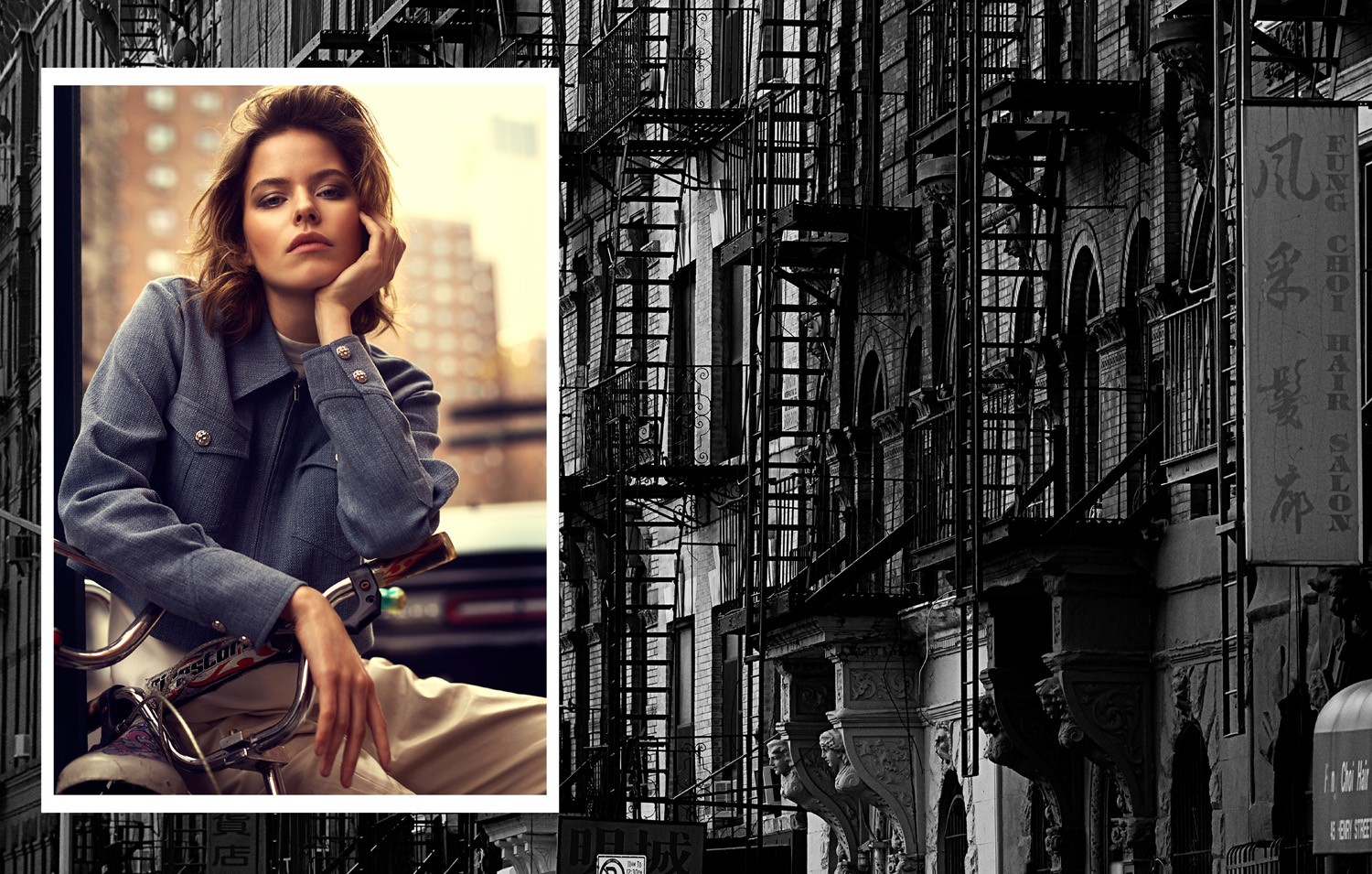
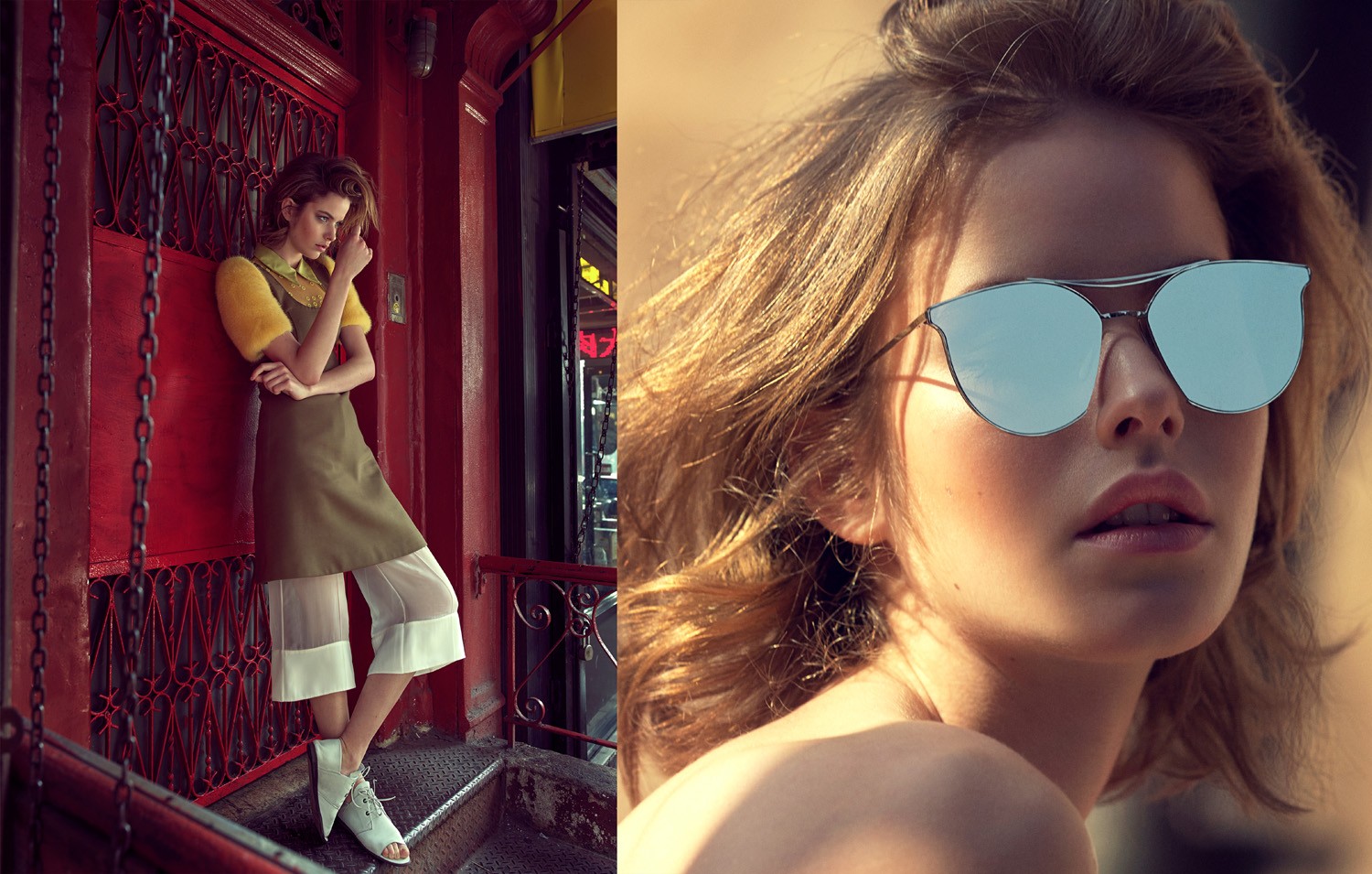
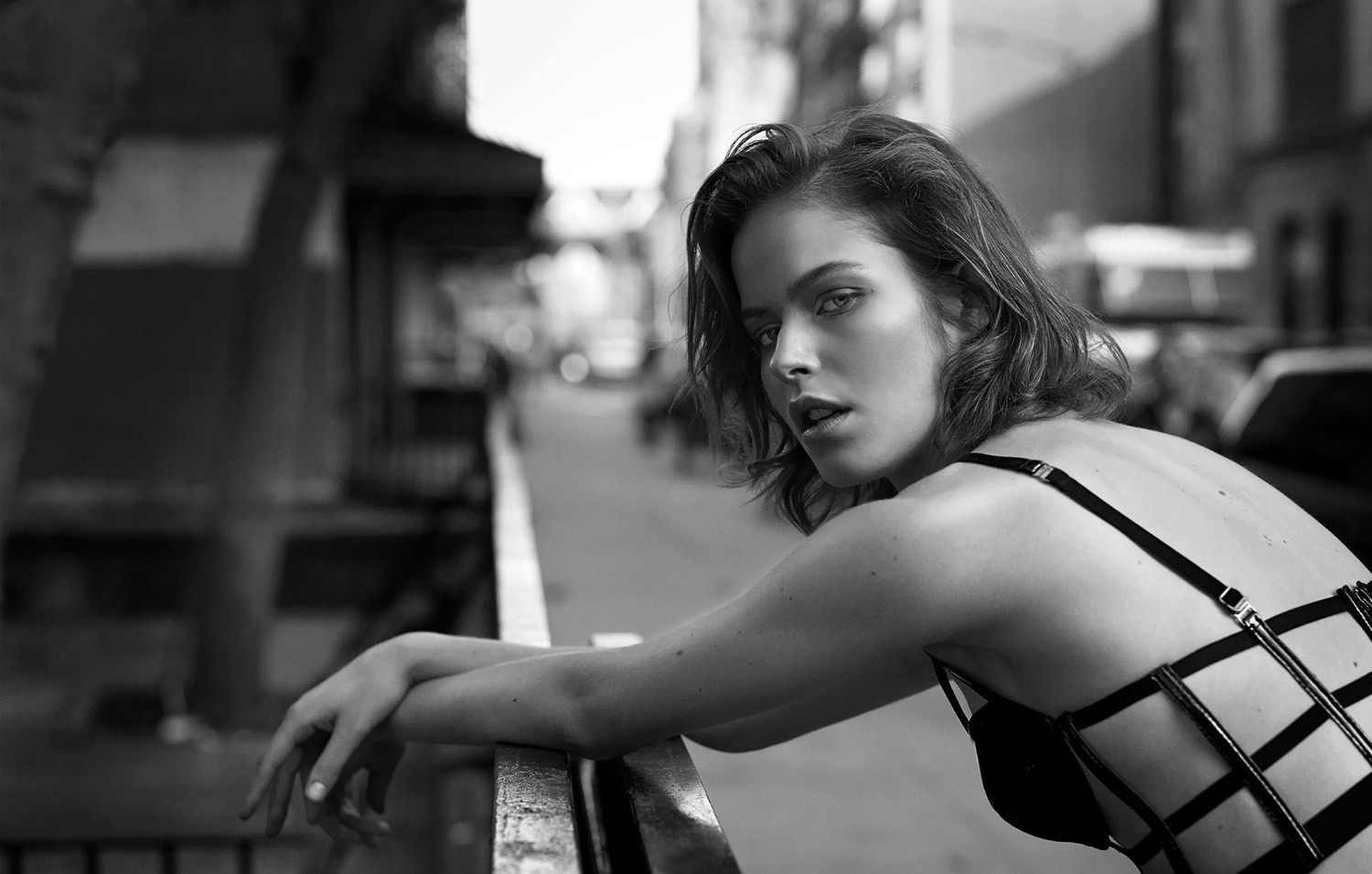
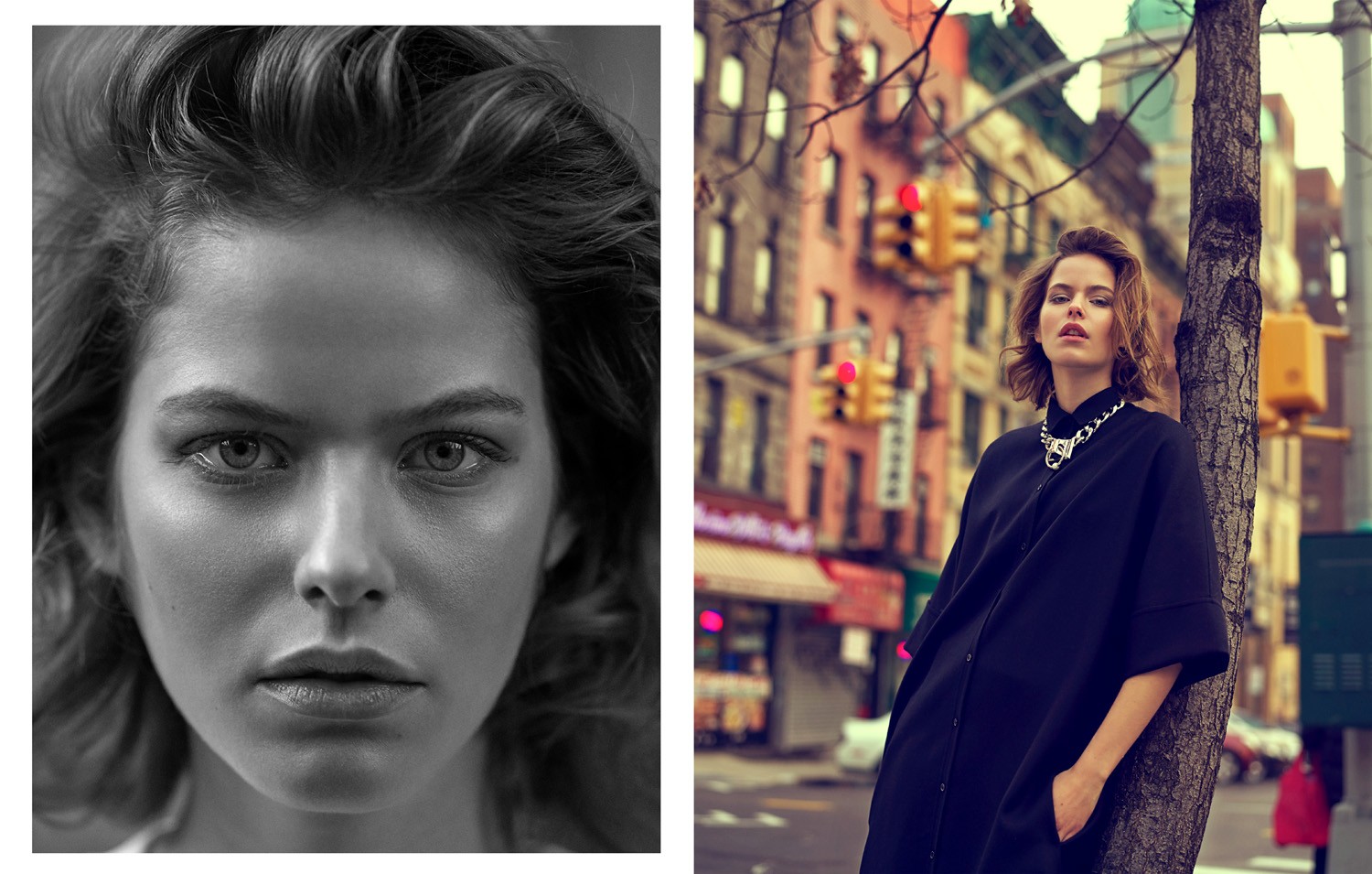
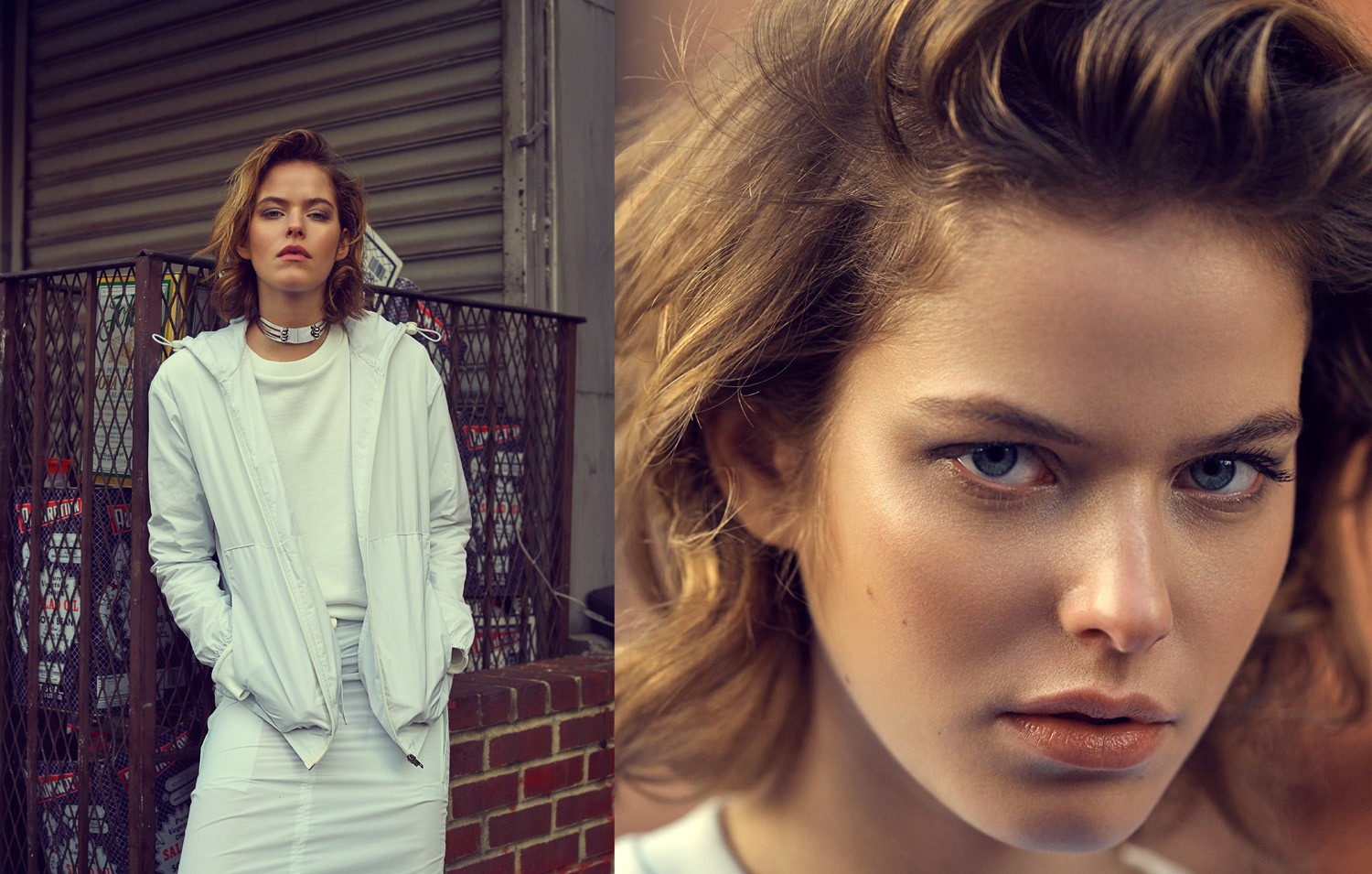
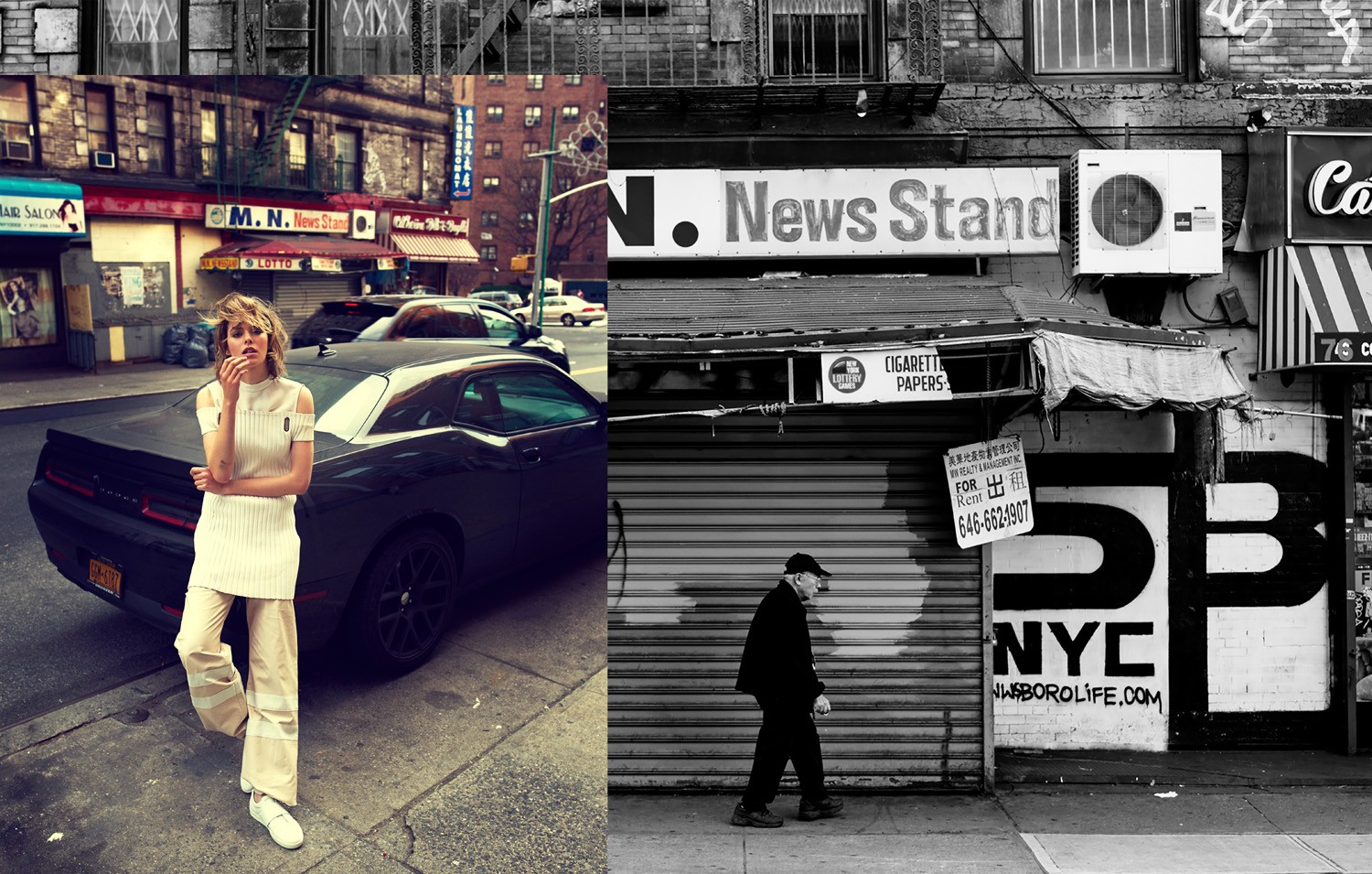
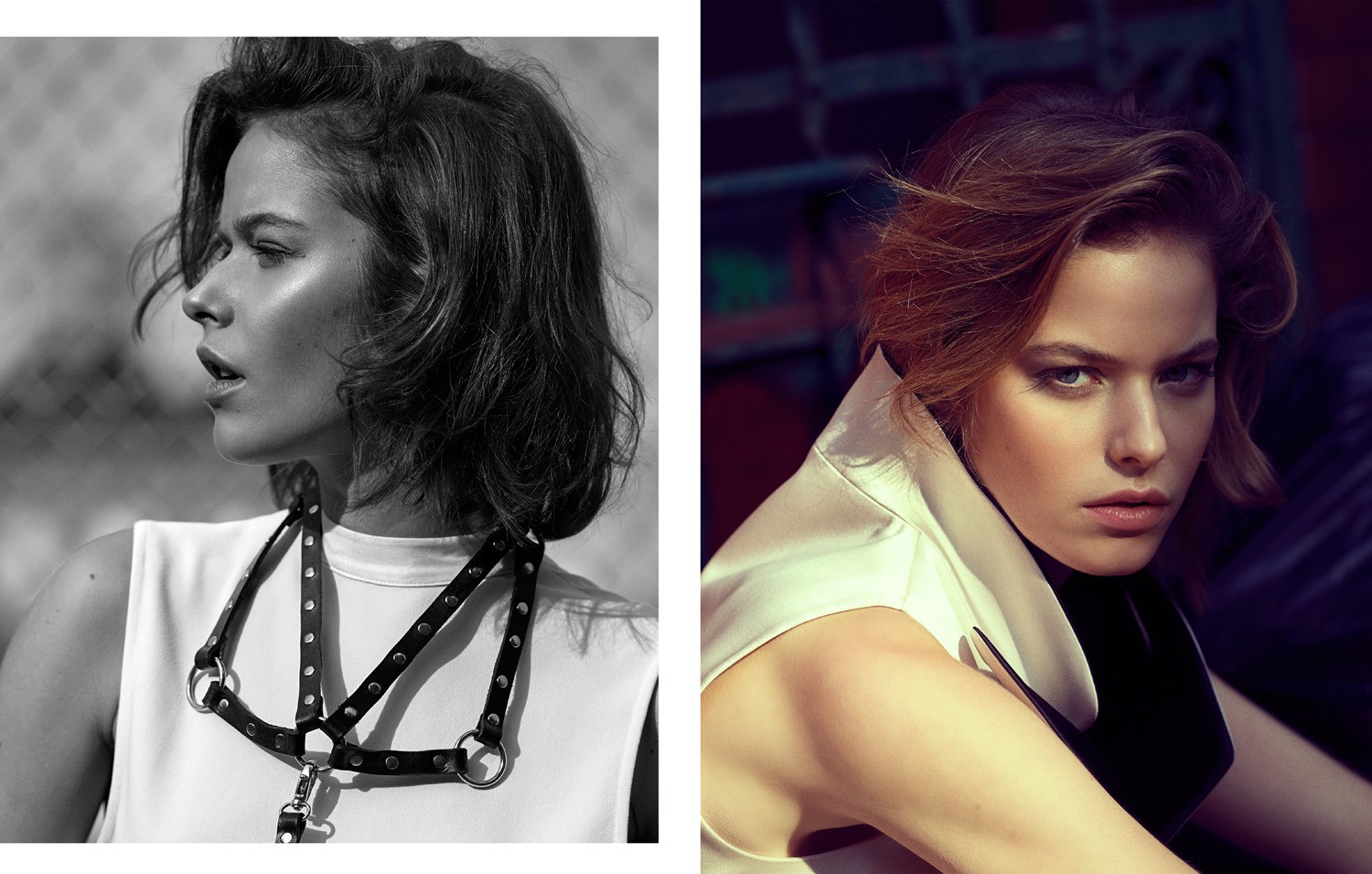
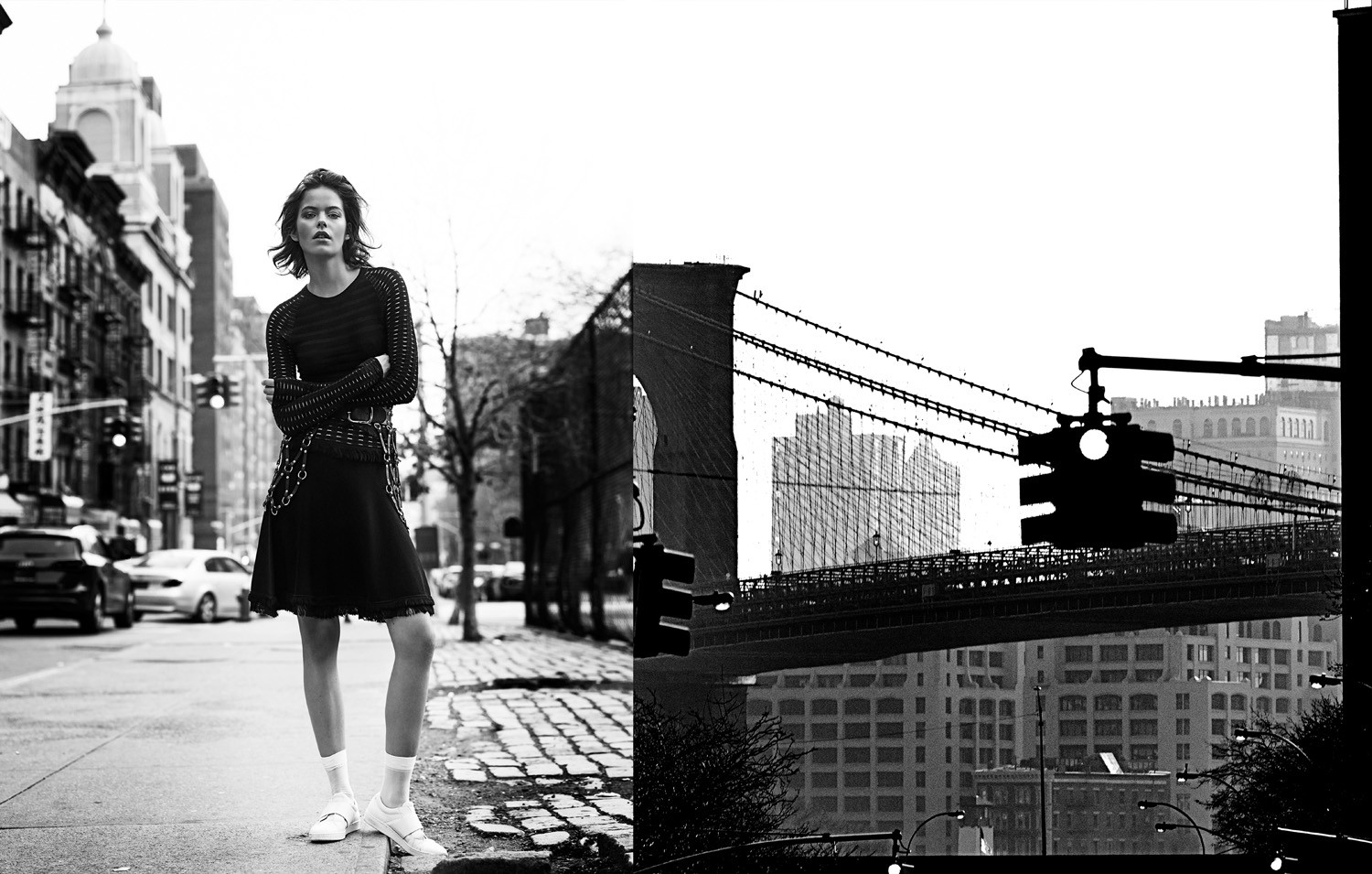
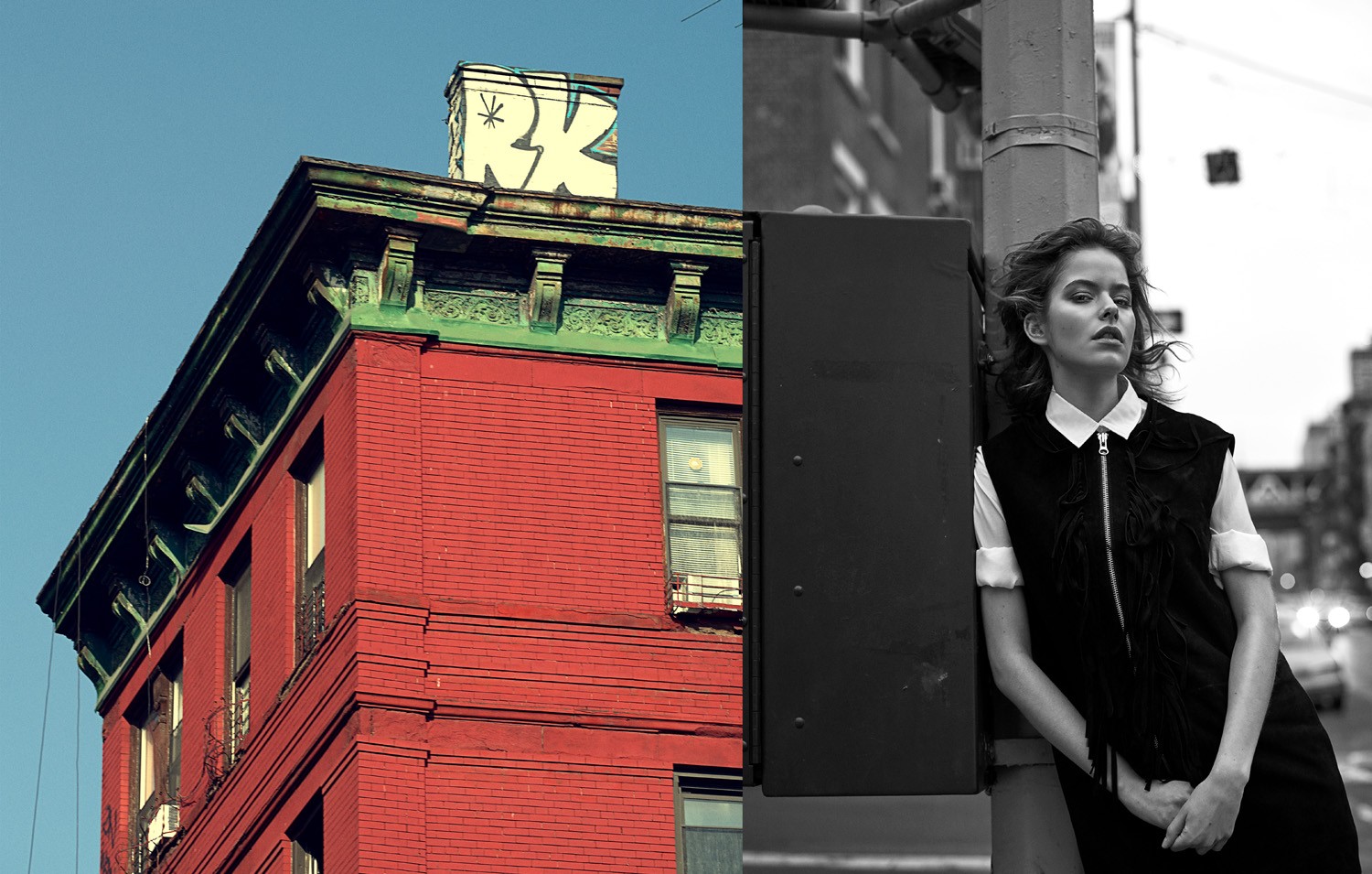
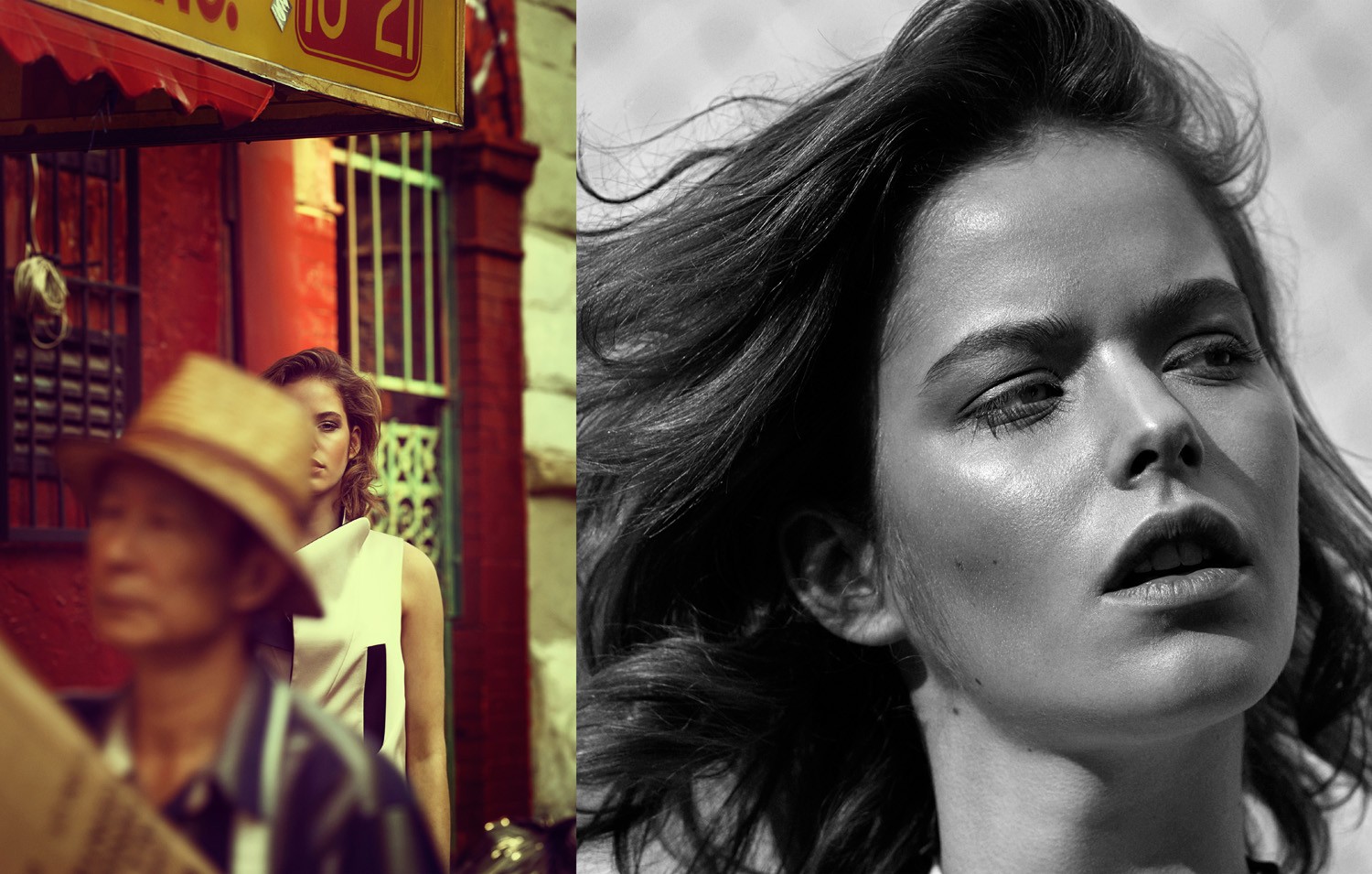
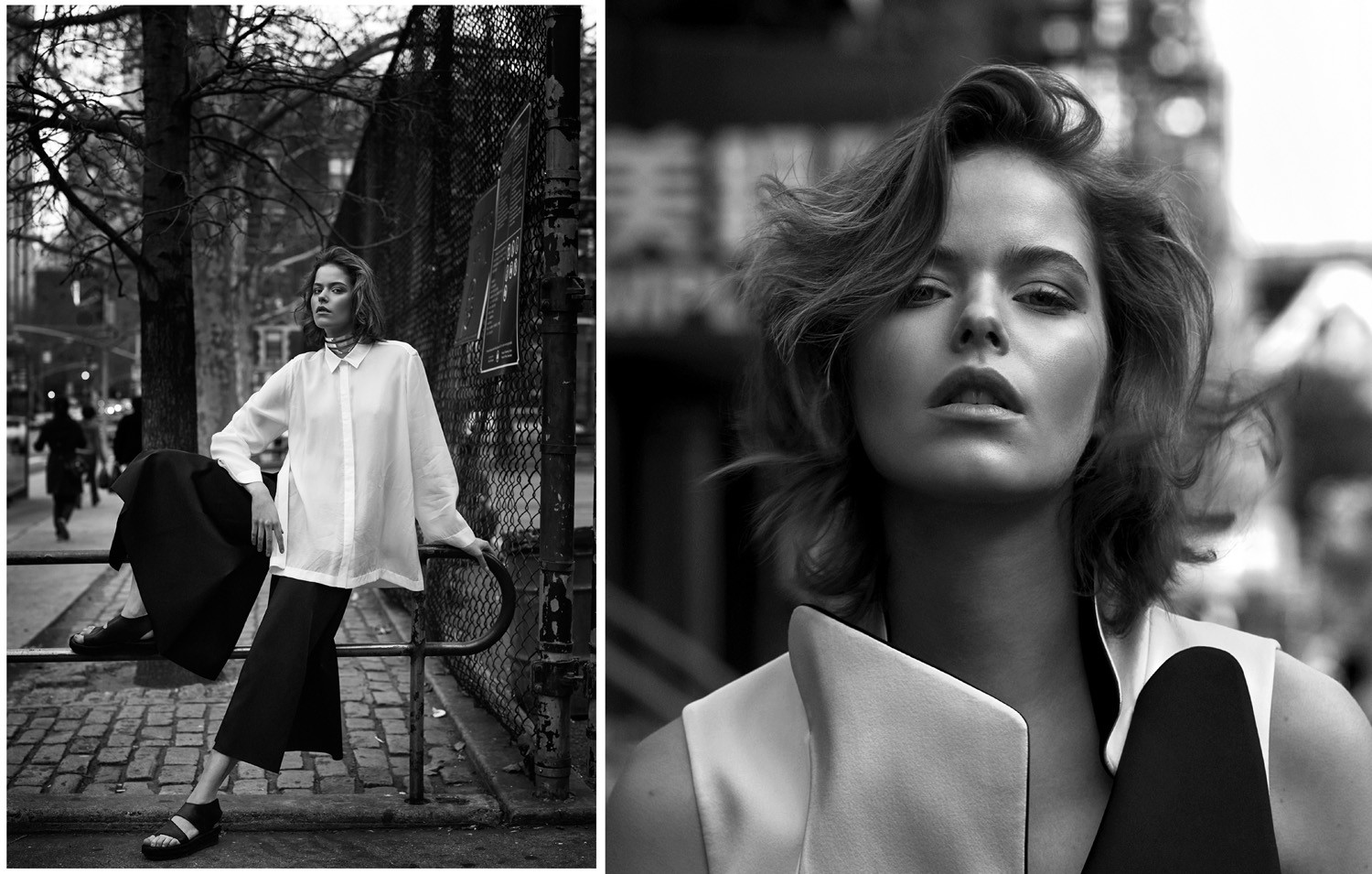
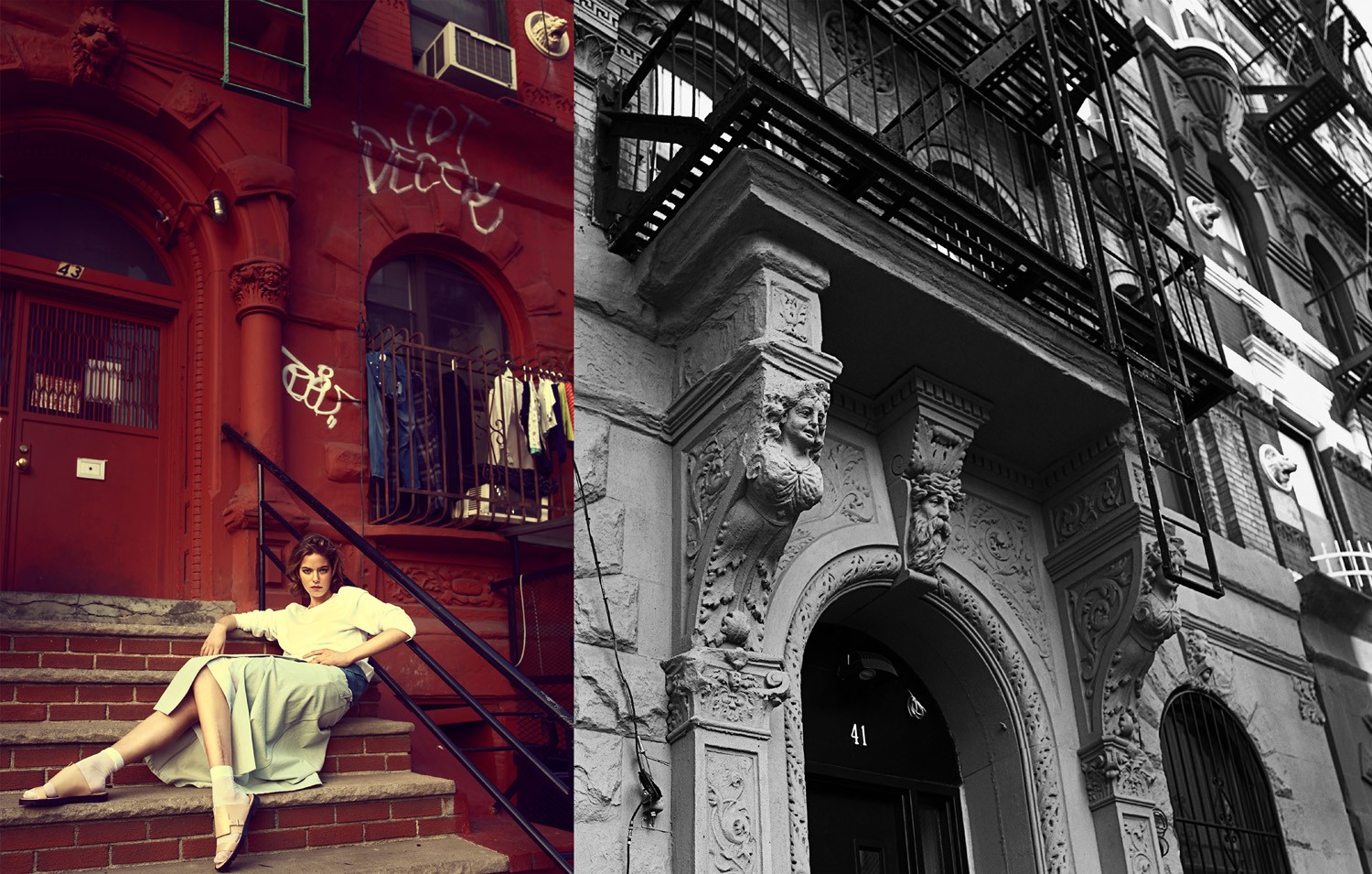
















INTERVIEW
Neil Francis Dawson
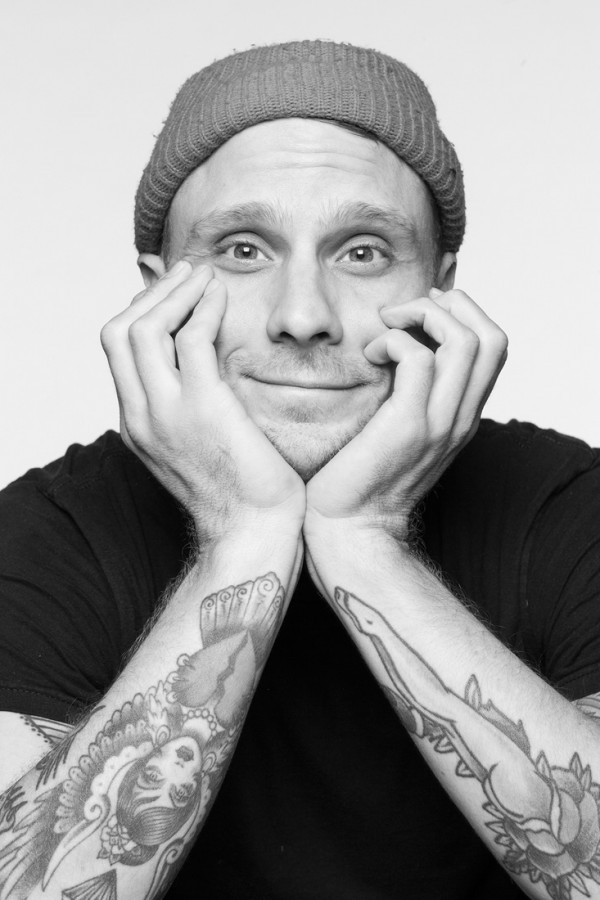
PHOTOGRAPHY Neil Francis Dawson STYLING Lisa Nguyen HAIR & MAKEUP Nicole Blais MODEL Alexandra Hochguertel @ The Society Management PHOTO ASSISTANT Richard Luong CAMERA Leica S with Summarit-S 70mm f/2.5 Asph., Apo-Macro-Summarit-S120mm f/2.5 Asph.
“Fourth Ward” is the original name for New York City’s “Two Bridges” district, that has yet to be invaded by hipsters. With its magnificent but run-down 19th century buildings, it exudes the perfect kind of morbid flair that Neil Francis was hoping to find for his story. This is where he put model Alexandra Hochguertel in the spot-light for a reportage-like fashion spread.
S Magazine: You chose Fourth Ward as the subject for your shoot. Why did you choose this area for your fashion shoot given its historic background?
Neil Francis Dawson: Well it's not quite the subject, it's the title of the story and the location: the area is Two Bridges, New York. Back in the 19th century, the wards was a numbering system segregating the different migrant communities. I'm no history nerd but I do love looking up and walking through the area and thinking about how nuts it used to be. The exact area I shot in borders the 4th and the 7th wards, kind of pointless history info but I wanted to explore the landscape a bit, and use the beautifully degraded setting as my location.
It’s the only piece of Manhattan that has not been totally overrun by loft building, mixologist-loving, cocktail-sipping hipsters. Also, the narrow streets and old low rise buildings make for a beautiful ambient light. The area has been very much a Chinese community for the past several decades and the only cosmetic upgrades made since the 1800s are a couple of layers of lead paint. When you look past restaurants, 99c stores and Chinese signage, you see these incredible, old buildings that were once occupied by wealthy tradesmen, until the huge migration from Europe pushed them north and turned the area into the dirtiest most blood-stained slum in North America.
It is this history I fell for. It’s also where I live and I find it near impossible to not be inspired by it on a daily basis. From walking the dog, to just going to the bodega to buy a beer, I'm always looking and always seeing new things. The people who live in this area are incredible: passed-out junkies, funny old black guys who always have something to say, “That dog is one mother-f****** looking killer son”, to my chubby little pug. Maybe the surroundings are a little weird to an outsider but it’s always super interesting – from buckets of frogs and turtles on the street for sale as food, to people burning gold leaf as offerings to Buddha. I took the opportunity handed to me by S Magazine, a brief-less assignment, to write a little visual story of this amazing area using my medium: fashion photography.
How would you describe your style? Is it very planned conceptually or more on the spontaneous side?
Everything is planned. I never wander into a shoot aimlessly, and I'm a control freak for sure! First of all, you definitely need a good vision and idea: it’s hard to sell a shit sandwich and it's equally as hard to make a silk purse out of a pig's ear, so having a good idea and concept is key. Every element is important – from casting, styling, hair, and make-up to choosing the right team, location, lighting, etc.. Fashion shoots become a shit fest of confusion if you go into them without a plan, especially if it is conceptual; but I always leave a door open for inspiration to flow in and for the story to grow, ultimately the concept/theme has to stay true to my original vision. I have great respect for the whole team and their thoughts too, but, after all, it always falls on my shoulders.
You've got to have balls and the knowledge to drive your team, to land up with the intended story, especially when you have no budget and all you have to give these incredibly talented people in return is a hand full of photos… so those better be some f****** great photos. There's always a clear direction and I always go through the styling the day before with the stylist and my creative partner, Lisa Nguyen. We make a plan as to what we shoot, where we shoot it, and at what time of the day, based on light and how the hair and make up will evolve or degrade throughout the shoot. I like to have a plan so there's less stress and more harmony and in turn the creativity side flows easily. Especially when you are trying to shoot 14+ looks to cover 28 pages all on one day in December when it's dark by 4:30pm. I like to think fashion photography is more than just selling frocks and suits, I like to give the photos some life. Pointless off-camera stares and dead eyes are, to me, a failure: if the model can’t be genuine then it's my job to try and get something out of her/him.
Which photographer had the biggest impact on you and what would you describe as your favourite genres?
Man Ray was the first photographer I fell for when I started to really study photography. This was obviously pre-digital and I loved the way he was able to mess with the standard photograph/neg with different darkroom techniques: he made me see photography could be more than just a captured memory. Then the digital age brought on Nick Knight, who was overtaken by Solve Sundsbo, who in some way has a similar approach but now with limitless digital toys to play with. Helmut Newton has always been an inspiration. I love his style and approach, the understanding that the model was a canvas to transform and fulfil his vision; and let’s not forget Guy Bourdin, his beautiful way of transforming a fashion photograph into a fantasy and a piece of art.
I’m a big believer in fashion photography being a type of escapism: in 10-20 pages you have the ability to tell a story and it really doesn't have to have a beginning, middle and an end. I love to play with the balance of conceptual weirdness nestled in a somewhat mundane reality. It’s very hard for me to tow the line: I often have to hold back and think, will this help me get more work? Starting from nothing, I have to adhere to some formalities and that kills me sometimes, but my motivation and drive come from knowing that the goal is to have the financial backing to really let loose and have more creative control for my visions. I can’t let my mind wander too far, if I want to make money as a fashion photographer. But, “If you stand in the middle of the road long enough you will get hit by a f****** bus.” I just really hate the idea of being middle of the road, producing a page turner or, in today’s case, a thumb flicker with no “double click” to indicate a “like”…bollocks.
A lot goes into every photo and as a photographer you can only hope a few people can take a second to enjoy it; but in this digital age of impatience and celebrity-craving, “like”-hungry whores, it's become more and more difficult to create imagery that can hold a viewer's mind for more than a few seconds, before they flick to the next Kanye/Kardashian train wreck.
But the photographer who really influenced me the most was Hedi Slimane! His beautiful simplicity, that is always chic and fashionable, is a vision of someone who really gives a shit about the image and every element in it. I had the pleasure of working for him on a few Saint Laurent campaigns, and it was so inspiring to see how one man can have so much creative power, yet be incredibly humble and nice. He designs and shoots everything and not once did I ever hear him say “hmm… maybe we try this” or “let’s try…”. No, he always knows exactly what he wants and there is no guess work, his vision is 100% clear, and that made me want to learn more and better myself and never doubt my vision. I have had the opportunity to work for and meet a lot of the world's best photographers, and they have all given me something, they have all sculpted me, consciously or subconsciously. From Bailey’s whit and charm, to Horst Diekgerdes’s beautiful nature and calm humility, to Rankin’s ability to talk shit till he gets his sitter to open up and capture them in ways they have never seen themselves before – he is an incredible portrait photographer.
You worked at Rankin Studio. In what way did this influence you?
I kind of mentioned this above: working for him for several years gave me a thick skin and a strong work ethic and ability to work 7 days a week, 14 hours a day. To say he is a workaholic is an understatement, he is a f****** machine. Because of this, he in turn taught me that there is more to life than work, and it’s important to balance this and have time to relax, spend time with my family and friends, and give myself the time to clear my mind, slow down and be inspired.
And why did you move from London to New York. Which would you say is the more creative environment, or in what way do these places differ when working as a photographer?
I lived in London for 16 years and it was just getting a bit stagnant, the creative scene is a little too cliquey for my liking. I'm not a scene kid, nor am I a party kid, and I'm not wealthy enough to fit into the hoity-toity upper classes of the west London scene. South London still has some soul but it's miles from anything and full of broke, aspiring artists. North London is okay but there are only so many rainy pub nights one can handle, and I'm just not “wacky” enough to deal with east London. I love London and I have loads of amazing friends there, but the constant shit weather paired with the expensive and crammed public transport… I found myself living so far south I couldn't be bothered to venture out and do anything. I was simply existing and not really living.London is full of creative people: it's often the constant shit weather that drives people to do something and often this boredom translates into creativity and that’s why all the best music and fashion in the world has come from England.
NYC/Manhattan, on the other hand, is a small island, with everything happening below 25th street, and Brooklyn is a short bike ride or subway ride anywhere. There's something happening every night and if it’s shit, you go to the next thing that’s generally only a walk away, and at the end of the night you walk home or catch a 5 minute uber: the place is so condensed with life it’s always inspiring! Yeah, the winter is harsher than London, but the spring is spring, the summer is actually hot, and the autumn is incredibly beautiful. London is one constant shade of grey with maybe 10 days of average summer; but the music festivals in the UK are by far the best! The USA just can’t get it right – from the spoiled kids at Coachella to the faux hippies at Burning Man, it seems like a peacock show with no real respect for the music.
How would you describe the way you treat colour in your work?
Colour grading is a real pain in the arse. It drives me a little nuts at times: there is a fine line between stupid colour grading and boring reality. I don't use Mickey Mouse programmes like Alien Skin, I only use Photoshop and curves: it’s tricky! I'm sure there are colour nerds reading this saying it's not correct or nit picking it, but, to be honest, f*** 'em. I go by eye and if I like it I’ll roll with it. Balancing a 28-page shoot is a bit of a task without using a proofer or even a properly calibrated monitor. I had to email the images to myself and view them on my iPad and iPhone to see if they were okay, and then try and balance my monitor to my iPad – a f****** nightmare. I’m still working on my grading skills and I'm sure they will evolve as I do.
The 4th Ward uses street photography elements. Why did you choose this approach?
I wanted the girl to be part of the scene, so yes I guess I wanted it to have a “reportage”-type feel. I didn't want this bollocks “juxtaposition of a glamazon babe, in a downtown shit hole”. I also like to use a small crew on my location shoots to prevent it from turning into a big song and dance. The more low key, the more relaxed things are, and the sitter/model will be more comfortable and less self-conscious, and will blend into the scene and become part of the location, not just plonked down in the scene. I wanted to make sure the model and location were seamless. She needs to be believable as a character who might actually live in the scene – not a contrived visual noise.
What do you expect from a camera?
I expect a camera to be easy and intuitive. As a photographer there's already so much to be thinking about: light, model, angle, pose, etc., etc.. So to have a fiddly camera is the worst. The S is super simple, almost too simple, as the buttons have no markings so it takes a while to get used to that. I did make a couple of stickers for the faceless buttons: all I needed was preview, zoom and format. But, true to Leica’s incredible history and reputation as the best, this new age of large sensor Leica SLRS is a game changer. Flawless optics coupled with beautiful solid design makes for a truly great camera. I had the pleasure of shooting with the S2 a few years ago and it’s great to see its evolution internally: the sensor is amazing and I can’t wait to get my hands on the latest version, the 007. I feel the CMOS upgrade will really elevate it to a new level.